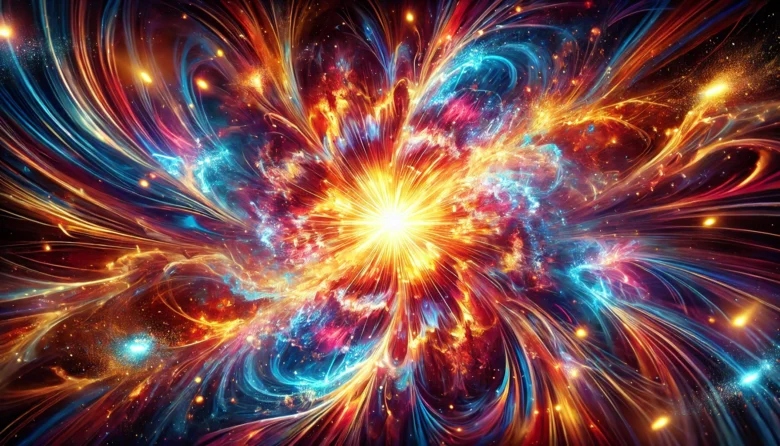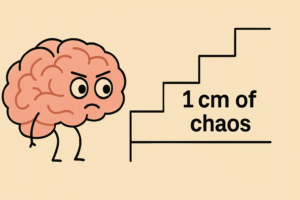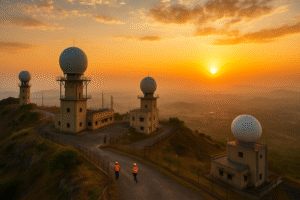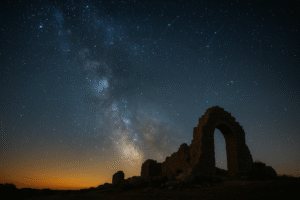The universe, as vast and mysterious as it is, has always fascinated us. From the twinkling stars in the night sky to the complex galaxies far beyond our reach, there’s an unending curiosity about how it all began. This blog will take you on a journey through time, from the explosive birth of the universe—commonly known as the Big Bang—to the intricate cosmos we live in today.
Introduction
Imagine waking up one day to find yourself in a world without stars, planets, or galaxies—just an endless void. That’s pretty close to what scientists believe the universe was like over 13.8 billion years ago, before the Big Bang. This cataclysmic event marked the beginning of everything we know, setting the stage for the formation of galaxies, stars, planets, and eventually life itself. In this blog, we’ll explore the evolution of the early universe, from the Big Bang to the present day, unravelling the mysteries of how it all came to be.
The Big Bang: The Birth of the Universe
The Big Bang is not just a theory; it’s the most widely accepted explanation for the origin of the universe. According to this theory, the universe began as an infinitely small, hot, and dense point—a singularity. Then, in an instant, it exploded, creating space, time, and all the matter that would eventually form galaxies, stars, and planets.
But what exactly caused this explosion? While we don’t have a definitive answer, scientists theorize that a fluctuation in a quantum vacuum (a concept from quantum physics where particles appear and disappear) might have triggered the Big Bang. Within fractions of a second, this tiny, dense point expanded at an incredible rate in a process known as inflation. This rapid expansion set the universe on its path to becoming the vast expanse we see today.
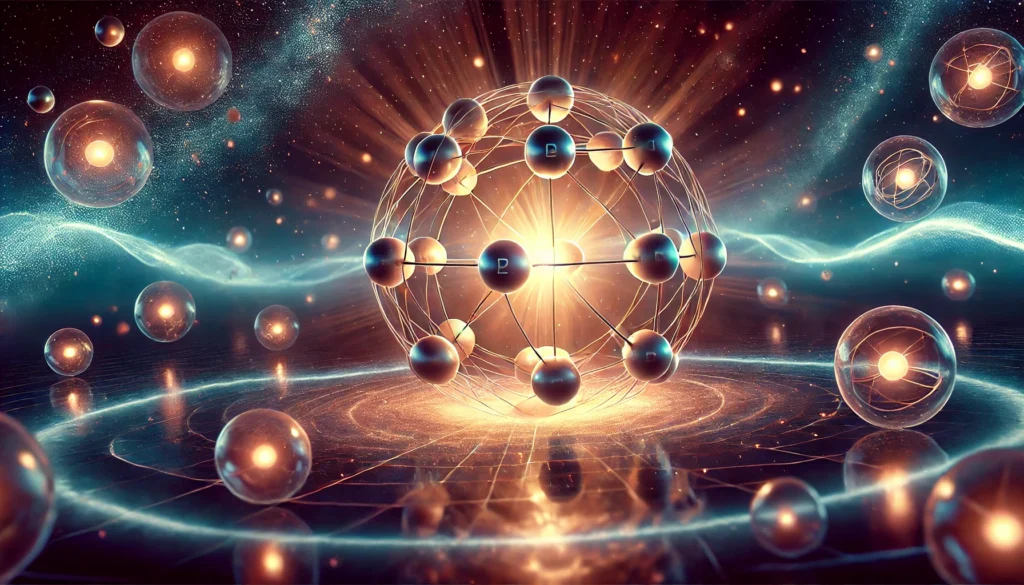
The Formation of the First Atoms and Light
As the universe expanded, it began to cool down. About 380,000 years after the Big Bang, it reached a temperature where protons and electrons could combine to form hydrogen and helium atoms, the simplest elements in the universe. This period is known as recombination, and it’s during this time that the universe became transparent, allowing light to travel freely for the first time. This light, known as the Cosmic Microwave Background (CMB) radiation, is still detectable today and serves as a “snapshot” of the infant universe.
The formation of these first atoms was crucial. Hydrogen and helium are the building blocks of stars, and without them, the universe would remain a dark and empty place. The light from this period gives us a glimpse into the past, allowing scientists to study the conditions of the early universe.
The Birth of Stars and Galaxies
With atoms forming, the next major milestone in the universe’s evolution was the birth of stars. Gravity played a significant role here, pulling hydrogen and helium atoms together to form dense clouds. As these clouds collapsed under their own gravity, the pressure and temperature inside them increased until nuclear fusion ignited, giving birth to the first stars.
These first stars were massive and short-lived, burning through their fuel quickly and ending their lives in spectacular supernova explosions. These explosions scattered heavier elements like carbon, oxygen, and iron into space, enriching the cosmic environment and paving the way for the next generation of stars and planets.
Galaxies began to form as gravity pulled stars together into massive clusters. The Milky Way is merely one among billions of galaxies scattered across the universe, with each galaxy harbouring millions, or even billions, of stars. The formation of galaxies was a complex process influenced by dark matter (a mysterious form of matter that doesn’t emit light but exerts gravitational forces) and dark energy (a force driving the accelerated expansion of the universe).
The Role of Dark Matter and Dark Energy
Speaking of dark matter and dark energy, these two components are crucial in understanding the evolution of the universe. Dark matter makes up about 27% of the universe’s mass-energy content, while dark energy accounts for about 68%. Yet, we know very little about them.
Dark matter doesn’t interact with light, making it invisible and detectable only through its gravitational effects. It’s believed to have played a key role in the formation of galaxies by providing the gravitational “glue” that holds them together.
Dark energy, on the other hand, is even more mysterious. It’s responsible for the accelerated expansion of the universe, pushing galaxies apart at an increasing rate. This discovery, made in the late 1990s, was a game-changer in cosmology, leading to the realization that the universe’s expansion isn’t slowing down but speeding up.
The Formation of the Solar System
Around 4.6 billion years ago, in a galaxy not so far away, a giant molecular cloud collapsed to form our Sun and the planets of the Solar System. This process began with a rotating disk of gas and dust, known as the solar nebula. As the nebula collapsed, most of the material concentrated at the centre to form the Sun, while the remaining matter flattened into a disk where planets, moons, asteroids, and comets took shape.
The Earth, our home, formed from the accretion of dust and rocky material in this disk. Over millions of years, it cooled and solidified, eventually developing the conditions necessary for life. The early Solar System was a chaotic place, with frequent collisions and intense radiation from the young Sun. But out of this chaos emerged a stable planetary system that has persisted for billions of years.
The Universe Today and Beyond
Fast forward to today, and the universe is a vastly different place from its early days. Galaxies have evolved, stars have lived and died, and new celestial bodies continue to form. The universe is still expanding, driven by dark energy, and its ultimate fate remains one of the biggest questions in cosmology.
Some theories suggest that the universe will continue to expand forever, eventually leading to a “Big Freeze” where stars burn out, galaxies drift apart, and the universe becomes cold and dark. Others propose the possibility of a “Big Crunch,” where gravity eventually halts the expansion and pulls everything back together, possibly leading to another Big Bang. There’s also the idea of a “Big Rip,” where the expansion accelerates so much that galaxies, stars, and even atoms are torn apart.
While we may never fully understand the universe’s origins or its ultimate fate, our exploration of these cosmic mysteries continues to inspire and challenge us. From the Big Bang to now, the story of the universe is one of constant change, driven by the forces of nature and the fundamental laws of physics.
Conclusion
The evolution of the early universe is a tale of transformation from a tiny, hot singularity to the expansive cosmos we inhabit today. The journey from the Big Bang to now has been marked by incredible events—the formation of atoms, the birth of stars and galaxies, and the mysterious forces of dark matter and dark energy shaping the universe’s destiny. As we continue to explore the universe, we are reminded of how much there is still to learn and discover. Whether we’re looking through a telescope or studying the Cosmic Microwave Background, the universe’s story continues to unfold, offering new insights and sparking our imagination.
Author’s Note
Writing about the evolution of the universe reminds me of how interconnected everything is—from the smallest particles to the grandest galaxies. It’s a humbling experience, and I hope this blog has sparked a bit of curiosity in you, too. If you enjoyed this journey through time, I encourage you to keep exploring the wonders of the cosmos. There’s always something new to discover!
G.C., Ecosociosphere contributor.
References and Further Reading
- NASA – The Big Bang
- BigBangTheory – designsof. https://designsof.com/tag/bigbangtheory/
- Study: Nature’s oldest light gives new insight into the age of the universe | The Intelligencer. https://www.lintelligencer.com/study-natures-oldest-light-gives-new-insight-into-the-age-of-the-universe-5009-2020/
- Galactic Habitable Zones – Habitable Zones – NAAP. https://astro.unl.edu/naap/habitablezones/ghz.html
- Mysteries Beyond The Stars – EVERYTHING UNEXPLAINED. https://everythingunexplained.com/mysteries-beyond-stars/
- Dark Matter and Dark Energy: Unlocking the Secrets of the Universe | Vinod Sharma’s Blog. https://vinodsblog.com/2020/09/15/dark-matter-and-dark-energy-unlocking-the-secrets-of-the-universe/
- How were stars like the sun formed? | Socratic. https://socratic.org/questions/how-were-stars-like-the-sun-formed
- Launching into World Space Week: 10 Exciting Space Facts for Kids!. https://kinetickidsacademy.co.uk/space-facts-for-kids/

